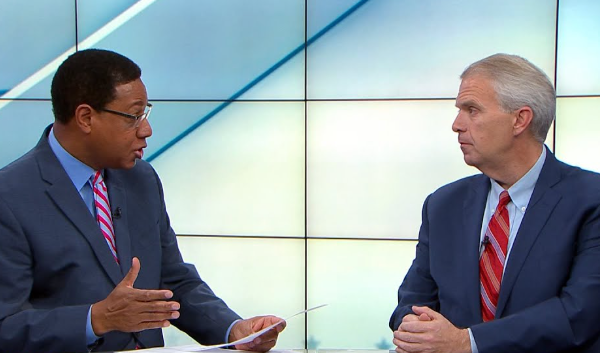Since publishing this story and posting it to the Stortytellers page on Facebook on March 19, at least 25 stations have indicated they have also begun having producers work from home and more are in the planning stages. We’ll soon be posting a “how-to” for delivering the weather from home as that appears to be the next move for multiple stations.
Of all the newsroom jobs, producing newscasts would seem to be one of the toughest to do from a kitchen table, but Wednesday, for the first time ever, WSMV News 4 producer Jules Marcantonio did just that.
“It went fine, on both ends,” Marcantonio said, “from both my perspective and the station’s.”
To gear up, Marcantonio said the station gave her a WiFi hot spot and a computer that is typically used by a photojournalist to submit content from the field. It included iNews and a remote access client, which allowed her to work directly on the newscast rundown and gave her access to all the station’s video and information sources.
“I’m the first one. My news director said, ‘You’re the guinea pig,’ but they’re planning on sending another producer home tomorrow and starting another next week,” said Marcantonio, who produces the station’s 4 p.m. newscast.
According to Marcantonio, the Meredith-owned station is trying to reduce the number of people in the newsroom every day, basically “trying to get as many bodies out of there as they can.”
Though it’s been just one day, Marcantonio said she’s had to change a number of things about her routine.
Communication is the biggest challenge. “There’s no more hearing the assignment editor shout out the updates. Now, I have to constantly keep up with email.”
More time-consuming. “I got up a little earlier today; I just knew I’d need more time.” Marcantonio said she was slowed down a bit, too, by having just one computer to work on vs. the two screens she has in the newsroom.
You’re not alone. “Right now, my roommate is still going into work, but it’s gonna get tricky when she’s there full-time.” She said the station’s reporters and photojournalists have discovered this as they do much of their work from home, too.
You ARE alone. “I hope it’s temporary. Going to work, as stressful as it is, your questions are answered in two seconds — this way everything just takes longer. You can definitely do it with the right equipment, but to really do this job well, you need to be there, in the newsroom.”
Marcantonio handles everything except overseeing the show in the control room. Before air, she discusses the plan for the newscast with the station’s executive producer, who makes the calls in the booth. The changes in responsibilities are affecting everyone, she said, especially because they’ve added three newscasts to each day.
“First, we were on the air for 14 hours with tornado coverage, then the coronavirus outbreak got worse. This job is stressful at all times, but you’re either in or you’re not in TV news.”
Marcantonio said she’s logged 98 hours for the past two weeks.
“And it’s been worse for other people. I’m lucky; I do get paid, time and a half for overtime, so I’m getting paid for what I put in and I’m grateful.”
She said even if she could get time off right now, she’s not sure she would take it. She lives less than a mile from the station and said she wants to be able to get there quickly if needed. So, what’s her biggest concern now about producing newscasts from home?
“I’m not sure I can do this for two months. I’m a little worried I might go insane,” she said with a laugh.
Jules Marcantonio graduated with a degree in broadcast journalism from the University of Mississippi School of Journalism & New Media. During her time in the program, she was heavily involved in the student-run daily newscast, NewsWatch Ole Miss.









1 Comment
[…] has already moved much of the reporting process and even newscast production out of the newsroom. What we hear at NewsLab is that at least two other stations — WDBJ in […]